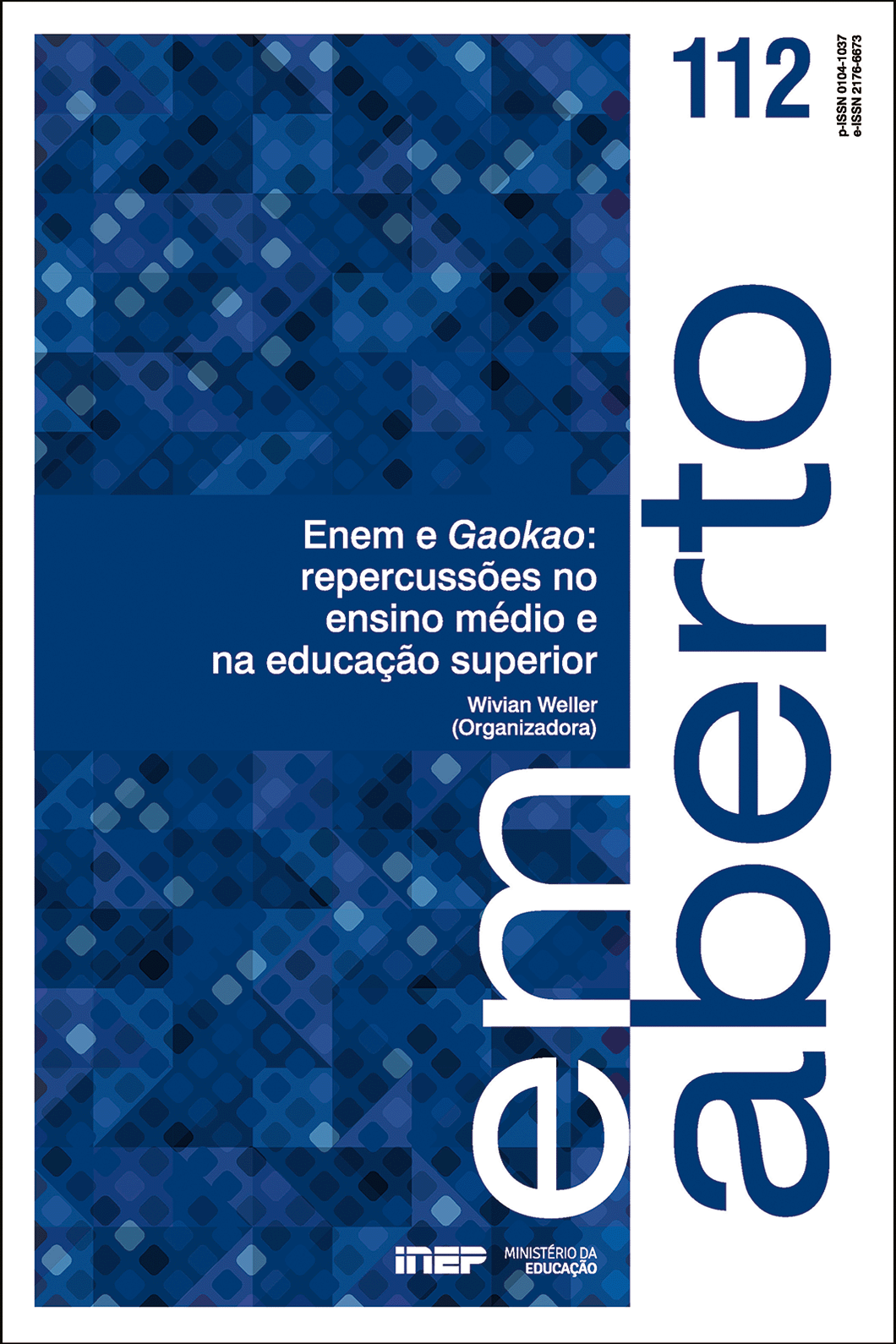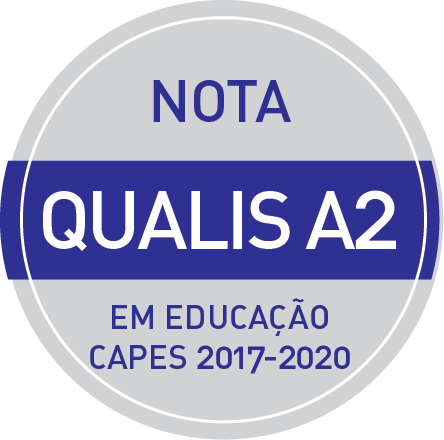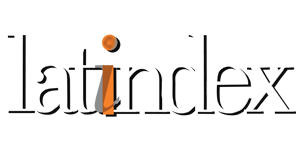Como exames nacionais de acesso à educação superior excluem estudantes: o caso da China
Resumo
Para demonstrar como o Exame Nacional de Acesso à Educação Superior (National College Entrance Examination – NCEE) exclui certas classes de estudantes, foram escolhidos artigos de periódicos online com resultados qualitativos que responderam especificamente ao objetivo da revisão que visa demonstrar os meios e métodos pelos quais esses estudantes são mantidos fora da educação superior. As mudanças no exame de admissão que ocorreram após a reintrodução do NCEE, em 1977, – tais como o critério de seleção diferenciada, as políticas de seleção como o sistema de cotas e o tratamento desigual de escolas e estudantes que envolve o fornecimento de recursos e serviços escolares –, levam à exclusão de minorias étnicas e de estudantes do meio rural. Os resultados apresentam uma visão geral do sistema educacional chinês, em particular a natureza de seus rigorosos exames universitários nacionais e a percepção dos problemas que os estudantes enfrentam.
Downloads
Referências
ANDREAS, J. Leveling the Little Pagoda: the impact of College Examinations, and their elimination, on rural education in China. Comparative Education Review, Chicago, v. 48, n. 1, p. 1-47, Feb. 2004. Available in: https://doi.org/10.2307/3541999. Acess in: 3 May 2021.
BRYMAN, A. Social research methods. 4th ed. New York: Oxford University Press, 2012.
CHINA. Ministry of Education (MoE). State Education Commission (SEC). Yearbook of education in China. Beijing: SEC, 1997.
CHUNGUANG, W. Education and social inequality in China: elite groups perpetuating their privileged status. China Perspectives, [Hong Kong], v. 3, n. 71, p. 110-116, 2007. Available in: http://www.jstor.com/stable/24053285. Acess in: 3 May 2021.
DAVEY, G.; DE LIAN, C.; HIGGINS, L. The university entrance examination system in China. Journal of Further and Higher Education, [S.l.], v. 31, n. 4, p. 385-396, 2007. Available in: https://www.tandfonline.com/doi/abs/10.1080/03098770701625761. Acess in: 3 May 2021.
FENG, Y. National college entrance examinations: the dynamics of political centralism in China’s elite education. Journal of Education, [S.l.], v. 181, n. 1, p. 39-57, Jan. 1999. Available in: https://doi.org/10.1177/002205749918100104 . Acess in: 3 May 2021.
HANNUM, E.; AN, X.; CHERNG, H. S. Examinations and educational opportunity in China: mobility and bottlenecks for the rural poor. Oxford Review of Education, Oxford, v. 37, n. 2, p. 267-305, 2011. Available in: https://www.tandfonline.com/doi/abs/10.1080/03054985.2011.559387. Acess in: 31 May 2021.
HARMAN, G. Student selection and admission to higher education: policies and practices in the Asian region. Higher Education, [S.l.], v. 27, n. 3, p. 313-339, 1994. Available in: https://doi.org/10.1007/BF01432073. Acess in: 3 May 2021.
LIU, C. Regional disparity in higher education enrollment in China. 2015. 60 f. Thesis (Master of Public Policy) – Faculty of the Graduate School of Arts and Sciences, Georgetown University, 2016.
LIU, J. Examining massification policies and their consequences for equality in Chinese higher education: a cultural perspective. Higher Education, [S.l.], v. 64, n, 5, p. 647-660, Apr. 2012. Available in: https://www.jstor.org/stable/23275718. Acess in: 3 May 2021.
LIU, L. An overview of development of higher education access in China. Higher Education Studies, [S.l.], v. 2, n. 2, p. 1-7, June 2012. Available in: http://dx.doi.org/10.5539/hes.v2n2p107. Acess in: 3 May 2021.
MUTHANNA, A.; SANG, G. Undergraduate Chinese students’ perspectives on Gaokao examination: strengths, weaknesses, and implications. International Journal of Research Studies in Education, [S.l.], v. 4, n. 5, Apr. 2015. Available in: https://doi.org/10.5861/ijrse.2015.1224. Acess in: 3 May 2021.
NOBLIT, G. W.; HARE, R. D. Meta-ethnography: synthesizing qualitative studies. Particularities: Collected Essays on Ethnography and Education, [S.l.], v. 44, p. 93- 123, 1999. chap. 5. Available in: https://www.jstor.org/stable/42975557. Acess in: 3 May 2021.
ROSS, H.; WANG, Y. The college entrance examination in China: an overview of its social cultural foundations, existing problems, and consequences. Chinese Education & Society, [S.l.], v. 43, n. 4, p. 3-10, July/Aug. 2010. Available in: https://www.tandfonline.com/doi/abs/10.2753/CED1061-1932430400. Acess in: 3 May 2021.
SIMAYI, Z. The practice of ethnic policy in education. In: LEIBOLD, J.; CHEN, Y. Minority education in China: balancing unity and diversity in an era of critical pluralism. Hong Kong: Hong Kong Scholarship Online, 2014. p. 131-160. Available in: https://doi.org/10.5790/hongkong/9789888208135.003.0007 . Acess in: 3 May 2021.
TAM, T.; JIANG, J. Divergent Urban-rural Trends in College Attendance: State Policy Bias and Structural Exclusion in China. Sociology of Education, [S.l.], v. 88, n. 2, p. 160-180, 2015. Available in: https://doi.org/10.1177/0038040715574779. Acess in: 3 May 2021.
UNITED NATIONS EDUCATIONAL, SCIENTIFIC AND CULTURAL ORGANIZATION (UNESCO). Thesaurus. [S.l.], [2021]. Available in: http://vocabularies.unesco.org/thesaurus/concept17100. Acess in: 23 Apr. 2021.
WANG, L. Social exclusion and inequality in higher education in China: a capability perspective. International Journal of Educational Development, [S.l.], v. 31, n. 3, p. 277-286, May 2012. Available in: https://doi.org/10.1016/j.ijedudev.2010.08.002. Acess in: 3 May 2021.
YANG, D. Bluebook of China’s Education General Report. Diversity and reform: preparing for a new age of education in China, [S.l.], v. 119, n. 2, p. 187-189, 2014. Available in: http://ci.nii.ac.jp/naid/40017128637. Acess in: 3 May 2021.
YANG, X. Access to higher education for rural-poor students in China. Educational Research for Policy and Practice, [S.l.], v. 9, p. 193-209, 2010. Available in: https://doi.org/10.1007/s10671-010-9084-3. Acess in: 3 May 2021.
ZHAO, X.; SELMAN, R. L.; HASTE, H. Academic stress in Chinese schools and a proposed preventive intervention program. Cogent Education, [S.l.], v. 2, n. 1, p. 1-14, 2015. Available in: https://doi.org/10.1080/2331186X.2014.1000477. Acess in: 3 May 2021.
Copyright (c) 2021 Em Aberto

This work is licensed under a Creative Commons Attribution-NonCommercial 4.0 International License.
A aceitação do texto implica automaticamente a cessão de seus direitos autorais ao Inep.
A revista Em Aberto adota a licença CC-BY.
A reprodução total ou parcial dos textos da revista é permitida desde que citada a fonte de publicação original e o link para a licença CC BY 4.0 e que sejam indicadas eventuais alterações no texto.













